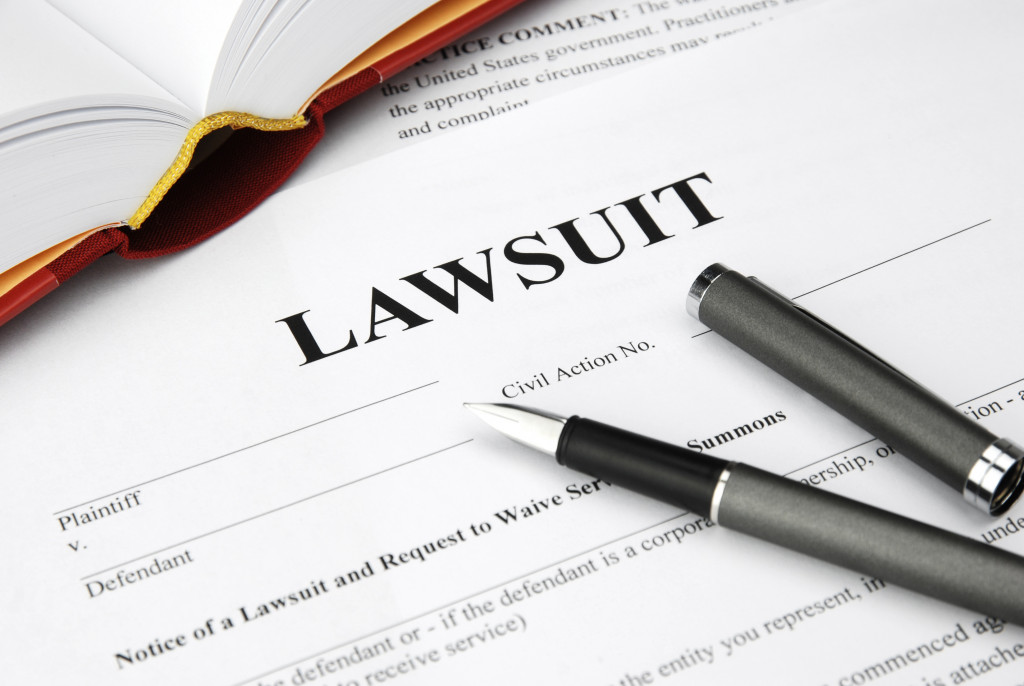- Filing a lawsuit against a company can seem daunting, but understanding the necessary steps can demystify the process.
- It’s essential to clearly understand your case before proceeding with legal action.
- Keep detailed records of all interactions, agreements, and evidence related to your case.
- Drafting a complaint is the first step in formally starting the legal process.
- Choose a trusted process server to ensure proper notification of the lawsuit to the company defendant.
Filing a lawsuit against a company might seem like a daunting task. Whether dealing with a breach of contract, workplace dispute, or a product or service that didn’t meet expectations, the legal process ahead can appear complex and intimidating.
However, understanding the necessary steps can demystify the process, helping you approach your case with confidence and clarity. This guide will navigate you through the essentials of filing a lawsuit against a company, emphasizing preparation, proper procedures, and informed decisions.
Understanding Your Case
Before you embark on a legal battle, you must comprehensively understand your case. A lawsuit can be emotionally and financially taxing, and entering into one without solid grounds can lead to unnecessary expenditure of time and resources.
Consult with a Legal Professional
The first step in this journey is to consult with a legal professional. Lawyers have the requisite knowledge to analyze the nuances of your case, predict possible challenges, and propose the most viable course of action. They can assess the evidence you have, advise on additional information needed, and provide insight into the potential outcomes of the lawsuit.
A preliminary consultation doesn’t commit you to a particular course. Still, it does equip you with the information necessary to decide whether to proceed with the case or seek alternative resolutions.
Document Everything
Keeping detailed records is another cornerstone in building a strong case. Every interaction, agreement, or exchange related to the patient should be documented meticulously. This includes contracts, communications, receipts, photographs of injuries or damages, and detailed notes of relevant incidents.
These documents form the evidence that will support your allegations against the company. They provide a factual basis for your case and are instrumental during negotiations or trial. Your lawyer will rely heavily on this information to build a compelling argument, negotiate settlements, or present the case in court.
Preparing Your Lawsuit

Once you’ve laid the groundwork by understanding your case and gathering evidence, the next phase involves formally setting the legal process in motion. This stage requires precision and adherence to legal protocols, as any misstep could adversely affect your lawsuit’s progress or validity.
Drafting the Complaint
Your journey through the legal system begins with drafting a complaint. This legal document outlines your allegations against the company, the harm you’ve suffered, and why the company is responsible. It’s the cornerstone of your lawsuit, officially putting the company on notice about the claims you’re bringing forward.
In the complaint, you’ll need to state the facts of your case clearly. This includes the company’s specific actions (or inactions) that led to your damages and the legal basis for holding the company liable. This isn’t a narrative or an emotional plea; it’s a fact-based document that should precisely lay out your case’s who, what, when, where, and why.
Choosing a Trusted Process Server
After your complaint is prepared, it must be filed with the appropriate court, and the company (now the defendant) must be notified of the lawsuit. Here, employing a trusted process server becomes essential. This professional is responsible for delivering your complaint to the defendant, adhering to the specific legal requirements for service of process.
Choosing a trusted process server ensures the company cannot claim they were not adequately notified about the lawsuit. Improper service can lead to delays or dismissal of your case. This crucial step verifies that the legal process is upheld, and the company defendant has no grounds to dispute its knowledge of the proceedings.
Navigating the Court Procedures

Embarking on the legal journey requires perseverance, patience, and strategic planning. Once your lawsuit is officially underway, the court procedures can be intricate. It’s a period that demands constant engagement, as you’ll need to deal with responses from the company, possible counterclaims, and the various procedural requirements of the court.
Responding to Rebuttals
After being served, the company will respond to your complaint. Typically, this could be an answer that addresses each allegation by admitting, denying, or claiming a lack of knowledge about it. Alternatively, the company might file motions that challenge the lawsuit on various grounds, like claiming that the complaint doesn’t establish a valid legal claim even if the facts are accurate.
The Bottomline
Filing a lawsuit against a company is a structured yet intricate process that evolves from understanding your case to possibly facing the company in court. It’s a path that requires legal counsel, evidence gathering, strategic planning, and sometimes, the fortitude to negotiate. Through this journey, it’s vital to stay informed, consult closely with your lawyer, and prepare for the uncertainties that come with legal proceedings.
While challenging, this process is a fundamental exercise of your rights, seeking accountability, justice, or compensation that you believe is rightfully yours. Remember, standing up for your rights is an admirable pursuit, and understanding the steps involved is your first triumph on this legal journey.




